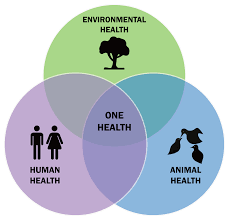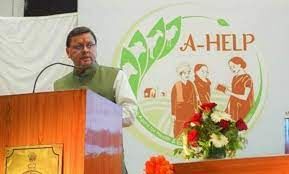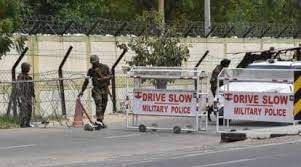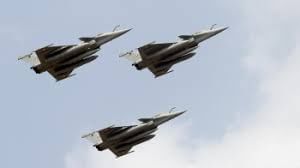UPSC Daily Current Affairs- 15th April 2023 | Current Affairs & Hindu Analysis: Daily, Weekly & Monthly PDF Download
GS-I
Uttaramerur inscription

Why in News?
Recently, Prime Minister Narendra Modi referred to the Uttaramerur inscription in Kanchipuram, Tamil Nadu, while discussing India’s democratic history.
About Uttaramerur inscription:-
- The Uttaramerur inscription, dated around 920 A.D. in the reign of Parantaka Chola [907-955 A.D.].
- Uttaramerur: it is situated in the Kancheepuram district, about 90 km from Chennai.
- The Pallava king Nandivarman II established it around 750 A.D.
- The Uttaramerur inscription testifies to the historical fact that nearly 1,100 years ago, a village had an elaborate and highly refined electoral system and even a written constitution prescribing the mode of elections.
- The details of this system of elective village democracy are inscribed on the walls of the village assembly (grama sabha mandapa), a rectangular structure made of granite slabs.
- The inscription gives astonishing details about the constitution of wards, the qualification of candidates standing for elections, the disqualification norms, the mode of election, the constitution of committees with elected members, the functions of those committees, the power to remove the wrongdoer, etc.
- The villagers even had the right to recall the elected representatives if they failed in their duty.
- In fact, inscriptions on temple walls in several parts of Tamil Nadu refer to village assemblies.
Source: Indian Express
Lower Arun Hydroelectric Project

Why in News?
The Investment Board of Nepal recently approved the investment proposal from India's Satluj Jal Vidyut Nigam (SJVN) to build a 669 Mega Watt Lower Arun Hydro project in Nepal.
About Lower Arun Hydroelectric Project:
- It is a 679MW hydropower project.
- It is a run-of-river project planned on Arun River (a tributary of the Koshi River), Nepal.
- The project will be built under the build, own, operate and transfer (BOOT) model.
- The project is being developed by Investment Board Nepal and SJVN.
- This is the second project awarded to SJVN in Nepal, the first one being the 900 MW Arun 3 Hydro Electric Project in Sankhuwasabha District.
- The project will not have any reservoir or dam and will be a tailrace development of the Arun-3 hydro project, which will mean water re-enters the river for the Lower Arun project.
Key facts about Arun-3 hydro project:
- It is a 900MW run-of-the-river hydropower project being developed on the Arun River in Sankhuwasabha District in Nepal.
- It will include the construction of a 70m-tall and 466m-long concrete gravity dam on the Arun River.
- It will be the biggest hydroelectric facility in Nepal.
- SJVN Arun-III Power Development Company (SAPDC), a wholly-owned subsidiary of India’s SJVN, is developing the project on a build-own-operate-transfer (BOOT) basis.
- SAPDC will operate the facility for a period of 25 years, excluding the construction period of five years, before transferring the ownership to the Nepal government.
Source: AIR
GS-II
One Health Mission

Why in News?
The government launched the “ Animal Pandemic Preparedness Initiative (APPI)” as well as the World Bank-funded Animal Health System Support for One Health (AHSSOH) project under the aegis of the National One Health Mission.
Why Needed?
- India with its diverse wildlife, one of the largest livestock populations, and high-density human population carry heightened risks for the inter-compartmental spread of diseases.
- The Covid pandemic, recent outbreaks of Lumpy Skin Disease in cattle, and the constant threat of Avian Influenza show that it is not just about addressing diseases from a human health point of view (zoonosis) but we need to address the livestock and wildlife aspects.
- This also opens opportunities for leveraging the complementarity and strengths that are inherent in each sector and devising integrated, robust, and agile response systems.
About Recent Initiatives
- Animal Health System Support for One Health(AHSSOH): It aims to create an ecosystem for a better animal health management system using the One Health approach.
- The project will be implemented in five States and it envisages improving the capacity building of stakeholders involved in animal health and disease management.
- The project calls for participation by the Human Health, Forest and Environment Department at the national, regional as well as local for creating and strengthening the One Health architecture including community engagement.
- The collaborative project will be implemented over a five-year period as a Central sector scheme with a financial provision of Rs. 1228.70 Cr.
- Animal Pandemic Preparedness Initiative (APPI)
- It will create an “integrated disease reporting system for enhanced surveillance of zoonotic and other animal diseases
- The key activities under APPI which are at different stages of execution are as follows:
- Defined joint investigation and outbreak response teams (National & state)
- Design an overall integrated disease surveillance system (built on National Digital Livestock Mission)
- Strengthening the Regulatory system (e.g., Nandi online portal and Field trial guidelines)
- Creating disease modelling algorithms and early warning systems
- Strategizing Disaster Mitigation with National Disaster Management Authority
- Initiate targeted R&D to develop vaccines/diagnostics/therapies for priority diseases
- Build genomic and environmental surveillance methods to improve the timeliness and sensitivity of disease detection
What is One Health?
- One Health is an integrating idea that brings different sectors together to solve the health, productivity, and conservation challenges and has major implications for India.
- WHO formed a One Health Initiative to integrate work on human, animal, and environmental health across the Organization.
- WHO is also working with the Food and Agriculture Organization of the United Nations (FAO), the United Nations Environment Programme (UNEP), and the World Organisation for Animal Health (WOAH) as a One Health Quadripartite.
Present Scenario In India
- The Prime Minister's Science, Technology, and Innovation Advisory Council (PM-STIAC) approved to set up of a National One Health Mission with a cross-ministerial effort that will serve to coordinate, support, and integrate all the existing One Health activities in the country and fill gaps where it is appropriate.
- The Mission aims to coordinate across achieving overall pandemic preparedness and integrated disease control against priority diseases of both human and animal sectors, with early warning systems built on integrated surveillance systems and response readiness for endemic as well as an emerging epidemic or pandemic threats.
- The Integrated Disease Surveillance Project, launched in 2004 for disease outbreak detection and rapid response functions, has generated information on the flow of certain disease outbreaks but the program has been unable to integrate human and animal (livestock and wildlife) surveillance.
- A multi-disciplinary Road Map to Combat Zoonoses (2008) was laid to create an integrated mechanism for the surveillance, detection, and treatment of zoonoses.
Challenges
- Absence of standardized methods to measure the complexity of the benefits achieved from the holistic approach.
- Lack of systematic methodology to prove the nature of health impacts across the animal and human health sectors.
- Lack of agreement in leadership issues, resource allocation, and work distribution.
Suggestions
- India has combatted several zoonotic diseases and has a robust institutional network for biomedical research, which can lead and operationalize the One Health approach.
- For One Health Science, it is important to develop databases and models with a consolidated approach of ecologists, field biologists, epidemiologists, and other scientists.
- Understanding and responding to the drivers that threaten health; optimising the effectiveness of public health systems in achieving these goals within each sector
- Institutionalise strong, continuous, and mutually beneficial coordination and collaboration between all stakeholders through multi-disciplinary and multi-institutional joint planning and implementation
- Therefore, a nexus of science, social science, indigenous knowledge, and policy at national, state, and local levels can put forward strategies and institutions for the implementation of One Health.
Source: PIB
A HELP Program

Why in News?
‘A HELP Program’ launched in the State of Uttarakhand.
What is an A-HELP Program?
- About:
- The ‘A-HELP’ training programme is being run jointly by the Union Ministry of Rural Development and Ministry of Fisheries, Animal Husbandry and Dairying.
- In the programme, members of women self-help groups registered under State Rural Livelihood Mission, who are helping in various animal husbandry activities in the form of Pashu Sakhi, will be trained as ‘A-HELP’ (Accredited Agent for Health and Extension of Livestock Production).
- Significance:
- A-HELP are community-based women activists, who assist veterinarians in local departmental activities, help livestock farmers to take loans for entrepreneurship development, fill applications, mark the ear tagging of animals and register them in INAF portal and help with insurance etc.
- ‘A-HELP’ assistance can be taken in implementation of various schemes and in providing information to the farmers at grassroots level.
Rashtriya Gokul Mission
- The Rashtriya Gokul Mission (RGM) has been implemented for development and conservation of indigenous bovine breeds since December 2014.
- The scheme is also continued under the umbrella scheme Rashtriya Pashudhan Vikas Yojana from 2021 to 2026.
- Objectives:
- To enhance productivity of bovines and increase milk production in a sustainable manner using advanced technologies.
- To propagate use of high genetic merit bulls for breeding purposes.
- To enhance Artificial insemination coverage through strengthening breeding network and delivery of Artificial insemination services at farmers doorstep.
- To promote indigenous cattle & buffalo rearing and conservation in a scientific and holistic manner.
National Animal Disease Control Programme (NADCP)
- To vaccinate over 600 million cattle in the country in an effort to mitigate the two diseases namely, the Foot & Mouth Disease, & brucellosis.
- To control livestock diseases by 2025, and eradicate them by 2030.
- The livestock that will be covered under the programme includes cattle, buffalo, sheep, goats, and pigs against the FMD.
- The project will be fully funded by the Central Government.
- The programme envisages 100% ear tagging of the eligible animal population.
Other Initiatives
- Dairy Sahakar scheme: It is an initiative of the Ministry of Agriculture and Farmers' Welfare, introduced in 2014-15, with the objective of sustainable development of livestock.
- Animal Husbandry Infrastructure Development Fund (AHIDF): Fund helps to increase milk and meat processing capacity and product diversification thereby providing greater access for unorganized rural milk and meat producers to organized milk and meat markets.
- Pashu-Aadhar: It is a unique ID on a digital platform for traceability for the
- animals.
- National Digital Livestock Mission (NDLM)
- Livestock Health & Disease Control (LH&DC) Scheme: It aims to reduce risk to animal health by prophylactic vaccination against diseases of animals, capacity building of Veterinary services, disease surveillance and strengthening veterinary infrastructure.
- Dairy Processing and Infrastructure Development Fund (DIDF) Scheme:
- Launched: 21st December 2017
- Objectives: To modernize the milk processing & chilling plants including value addition
- E-GOPALA app
- Nationwide Artificial Insemination Programme
Source: PIB
GS-III
Cooperatives in India

Why in News?
The Central Government has recently introduced Bill to amend the Multi-State Co-operative Societies Act, 2002.
The key features of this Bill are:
- The Central Government will establish the Cooperative Election Authority to conduct the election of board members;
- Provision for amalgamation of UCBs with other multi-State UCBs as decided by general meeting with two-thirds of its members present and voting;
- The Central Government will prepare a scheme and create a fund, to be contributed by profit-making multi-State UCBs, for rehabilitation of sick multi-State UCBs;
- There are restrictions on the redemption of government shareholding; and
- One or more Co-operative Ombudsman with territorial jurisdiction to be appointed by the Central Government for the redress of complaints.
About the Cooperative Societies:
- According to International Labour Organization, a cooperative is an autonomous association of persons united voluntarily to meet their common economic, social and cultural needs and aspirations through a jointly owned and democratically controlled enterprise.
- A co-operative society is a voluntary association of individuals having common needs who join hands for the achievement of common economic interest.
- Its aim is to serve the interest of the poorer sections of society through the principle of self-help and mutual help.
- The cooperative movement is as old as India’s Independence.
Cooperative evolution in India:
- Cooperatives were first started in Europe and the British Government replicated it in India to mitigate the miseries of the poor farmers.
- First credit cooperative society was formed in Banking in 1903 with the support of the Government of Bengal
- Enactment of the Cooperative Credit Societies Act, 1904 gave Cooperative a definite structure and shape.
- In 1919, cooperation became a provincial subject and the provinces were authorised to make their own cooperative laws under the Montague-Chelmsford Reforms.
- National Cooperative Development Corporation (NCDC), a statutory corporation, was set up under National Cooperative Development Corporation Act, 1962.
- The Government of India announced a National Policy on Co-operatives in 2002.
Current status in India:
- The country has 1,94,195 cooperative dairy societies and 330 cooperative sugar mill operations.
- Constitution (97th Amendment) Act, 2011 added a new Part IXB right after Part IXA (Municipals) regarding the cooperatives working in India.
- Village-level primary agricultural credit societies (PACSs) formed by farmer associations are the best example of grassroots-level credit flow
- Central Government recently established a distinct ‘Ministry of Co-operation’ to realize the aim of ‘Sahakar se Samriddhi’ (Prosperity via Cooperation) and to revitalize the cooperative movement.
- Cooperative Societies is in Item No. 32 in the State List.
Benefits of Cooperative Societies;
- Easy setup, less legal implications: Any ten members who have acquired the majority can form a cooperative society with few legal formalities.
- Promote equality and transparency: A cooperative society is based on the principle of ‘one man, one vote‘.
- All members have equal rights in handling the internal affairs. The surplus generated by these societies is dispensed equally among the members.
- Limited Liability: The member’s liability in a cooperative society is confined to the extent of their capital contribution.
- Eliminate Middlemen: Consumer cooperative societies are set up to attain a seamless supply of essential commodities.
- These societies purchase commodities directly from the producers & wholesalers and sell them to the end-users at affordable prices.
- Fosters Habit of Saving: Cooperative societies cultivate the habit of saving among their members. They render credit facilities generally for productive purposes only.
- Social Benefits: Cooperative societies have played a significant role in modulating social customs and controlling irrelevant expenses.
- The profits reaped by the cooperatives can be used for facilitating fundamental amenities of the society.
- Access to Credit: Cooperative societies have helped in reducing the influencing of private money lenders in rural areas. Cooperatives facilitate credit at the nominal interest rate.
- Support Agriculture: Cooperative societies have supported the government’s effort to improve agricultural production.
- They act as a bridge between the government and farmers e.g., the government disburses High-Yielding Variety (HYV) seeds and fertilizers via Cooperatives.
- Reserve Funds: Cooperative societies are under the legal obligation to transfer their 25% of profit to the general reserve. Thus, it reduces the need for external funding.
Challenges:
Non-accountability:
- The government gave too many benefits to cooperatives, but then there was no further accountability which led to these cooperatives becoming more and more lethargic.
- Besides as there was no competition, they became more and more costly they were not at all efficient and the worst part was that the government allowed them to function like this and pass on the burden of costs to consumers.
Vested interest of some people:
- A lot of times people who are in position in control of cooperatives are actually people who have joined cooperatives for personal gains.
Lack of coordination:
- Generally what happens in cooperatives is that different cooperatives at different level don’t coordinate this makes the work of cooperatives difficult.
The Internal Free Rider Problem:
- New members who provide very little capital enjoy the same benefits as long-standing or founding members who have major investments in the cooperative
- New members get a “free ride” on the investments and other efforts of existing members, thereby diluting the returns to existing members.
No Balanced Growth:
- The cooperatives in northeast areas and in areas like West Bengal, Bihar, Orissa are not as well developed as the ones in Maharashtra and the ones in Gujarat.
Political Interference:
- This is the biggest problem faced by Sugar cooperatives in Maharashtra.
Mismanagement and Manipulation:
- A hugely large membership turns out to be mismanaged unless some secure methods are employed to manage such co-operatives.
- In the elections to the governing bodies, money became such a powerful tool that the top posts of chairman and vice-chairman usually went to the richest farmers who manipulated the organization for their benefits.
Lack of Awareness and Restricted Coverage:
- People are not well informed about the objectives of the Movement, rules and regulations of co-operative institutions.
- Most of these societies are confined to a few members and their operations extended to only one or two villages.
Way Forward:
The Cooperative societies can play a vital role in the rural transformation. Provision of adequate financial and technical assistance can enable them to address rural challenges and contribute to India’s growth story. Government should take all possible steps to facilitate growth ecosystem for the Cooperatives.
Source: The Hindu
Where is Bathinda Military Station?

Why in News?
Four Army jawans were recently shot and killed at the Bathinda Military Station.
About Bathinda Military Station:
- Location:
- It is located in Bathinda, Punjab.
- It is about 280km from the capital Delhi and 100km east of the border with Pakistan.
- It is the headquarters of the 10 Corps of the Army, better known as Chetak Corps.
- The military station is a vital operational as well as a logistics base for the Army units responsible for the defence of southern Punjab and adjoining Rajasthan.
- Apart from the organisation set-up of the Corps HQs and the attendant units, the military station has a number of units from infantry, armoured, artillery, army aviation, engineers, signals and other divisions located across its vast area.
- A vital ammunition dump is also part of the Bathinda military station.
- History:
- During British rule, Bathinda and its surrounding areas remained under the British flag and away from the Khalsa Raj of Maharaja Ranjit Singh.
- During World War 1, it served as an important recruitment hub, feeding thousands of youth into the military supply chain for the British war machine.
- Gradually, Bathinda also became an important transit point for military forces focussed on the northwestern frontiers of undivided India.
Source: Hindustan Times
India's first Underwater Metro

Why in News?
India's first underwater metro recently conducted it's trial run under the Hooghly river, Kolkata.
About India's first Underwater Metro:
- It is a part of Kolkata Metro’s East-West Corridor.
- It passes under the Hooghly River in the city's northeast, with the tunnel 13 meter below the riverbed and 33 meter below ground level.
- Total length of the tunnel: 520 meter
- It forms part of the 4.8 kms underground section from Howrah Maidan to Esplanade
- Once this stretch is open then Howrah will be the deepest Metro station (33 meters below the surface) in the country.
- The metro is expected to cover the 520-meter stretch under Hooghly river in 45 seconds.
- The tunnel will have exists for emergencies like earthquakes.
Source: Times of India
Exercise Orion

Why in News?
Exercise OrionIndian Rafale combat aircraft are set to participate in a multinational wargame codenamed Orion, which is being hosted by France at Mont-de-Marsan, an Air Force base of the French Air and Space Force (FASF).
- About:
- It is a multinational exercise hosted by the French government.
- The backdrop of this excercise is the ongoing Russia-Ukraine conflict, where NATO led by the US is opposing Russian moves against Ukraine.
- It is reportedly the largest ever multinational exercise being carried out by the French defense forces which have involved their Army, Navy and Air Force.
- Exercise Orion would be the first overseas exercise for the IAF’s Rafale aircraft.
- Participation:
- It involves many of France’s NATO and other important allies like Germany, Greece, Italy, Netherlands, United Kingdom, Spain and the United States of America.
- It highlights the growing importance of India in the international arena and its close ties with key allies such as France.
- The participation of Indian Rafales in multinational wargames helps in improving their capabilities and also in enhancing the interoperability of Indian forces with their foreign counterparts.
- Participation in this exercise would further enrich the employment philosophy of the India Air Force, by imbibing the best practices from other Air Forces.
Source: Indian Express
|
63 videos|5408 docs|1146 tests
|
FAQs on UPSC Daily Current Affairs- 15th April 2023 - Current Affairs & Hindu Analysis: Daily, Weekly & Monthly
| 1. What is the UPSC exam and what are its three main components? |  |
| 2. What is the significance of General Studies Paper I (GS-I) in the UPSC exam? |  |
| 3. What topics are covered in General Studies Paper II (GS-II) of the UPSC exam? |  |
| 4. How does General Studies Paper III (GS-III) contribute to the UPSC exam? |  |
| 5. How can candidates prepare for the General Studies Papers in the UPSC exam? |  |
















